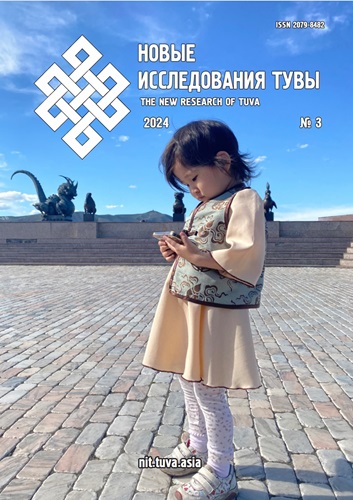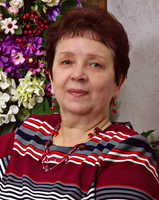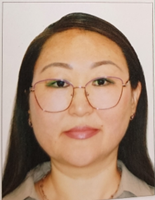The interrelation between headaches and the online behavior of adolescents and young people of the Republic of Tuva
DOI:
https://doi.org/10.25178/nit.2024.3.1Keywords:
teenagers; headache; youth; Tuva; Tuvans; tension headaches; internet; online behaviors; addiction; content consumption; RussianAbstract
The article analyzes one of the clinical forms of primary headache (tension-type headache, TTH) in adolescents and young people in Tuva, as well as its comorbid associations with different types of online behavior and assesses their role as potential predictors of headache development. The importance of this work stems from the high prevalence of TTH among adolescents and young adults in many countries, as well as the frequent association between this condition and maladaptive online behavior. Additionally, there is a high risk of developing chronic headache if appropriate diagnosis and prevention strategies are not implemented for this group of individuals.
The aim of the study was to investigate the associations between TTH and various types of internet use (adaptive, maladaptive, and pathological) as well as the characteristics of the internet content consumed among Tuvan adolescents and young people of different ages, genders, and ethnicities. The analysis is based on the results of online surveys conducted among adolescents and young adults in Tuva between January and September 2023, with a total sample size of 2,488 participants.
A comparative analysis of the indicators in the overall sample and in subgroups divided by gender and ethnicity (Tuvan and Russian) is presented. The prevalence of headache was found among all surveyed participants (14.2%), with a higher prevalence among Russians (22.6% and 12.9%) and girls (15.7% and 12.2%). The age group of 15–18 years also showed a higher prevalence (15.6%, 13.6%, and 4.5%). Close associations between headache and maladaptive online behaviors, such as problematic internet use and non-problematic internet use, as well as a mixed and undifferentiated form of problematic internet use, were revealed. Additionally, dependence on smartphones, computer games, and social networks was also found to be associated with headache. The significant role of these factors as predictors of headache in different age, gender, and ethnic groups was established.
References
Alidzhanova, D. A., Madzhidova E. N. and Nurmukhamedova M. A. (2017) The pathogenetic mechanisms of tension-type headaches in children and principles of its prevention. Sibirskoe meditsinskoe obozrenie, no. 1, pp. 5–10. (In Russ.).
Egorov, A. Yu. (2015) Modern views on Internet addiction and approaches to its correction. Meditsinskaia psikhologiia v Rossii, vol. 33, no. 4, p. 4. [online] Available at: http://mprj.ru/archiv_global/2015_4_33/nomer01.php (access date: 18.02.2024).
Kekeeva, Z. O., Uvarova, G. N., Darzhinova, S. V., Mueva, A. V. and Oorzhak, A. B. (2022) Research on the network identity of the student youth of Russian regions (the cases of Kalmykia and Tuva)]. New Research of Tuva, no. 4, pp. 169–179. (In Russ.). DOI: https://doi.org/10.25178/nit.2022.4.13
Lamazhaa, Ch. K. (2021) Social Culture of Tuvans and Online Space. New Research of Tuva, no. 2, pp. 115–129. (In Russ.). DOI: https://www.doi.org/10.25178/nit.2021.2.10
Shnaider, N. A., Kondrat'ev, A. V. and Shul'min, A. V. (2015) Epidemiology of headaches. Sovremennye problemy nauki i obrazovaniia, no. 6 [online] Available at: https://science-education.ru/ru/article/view?id=22811 (access date: 15.03.2024).
Evert, L. S., Seren-ool, S. S. and Sat, D. A. (2023) Teenagers of Kyzyl (Republic of Tuva) in the online space. New Research of Tuva, no. 4, pp. 237–254. (In Russ.). DOI: https://doi.org/10.25178/nit.2023.4.17
Evert, L. S., Reusheva, S. V., Zaitseva, O. I., Panicheva, E. S. and Potupchik, T. V. (2016) Etiopathogenetical aspects and risk factors for in children and adolescents. Rossiiskii pediatricheskii zhurnal, vol. 19, no. 6, pp. 80–84. (In Russ.).
Evert, L. S., Tereshchenko, S. Yu., Zaitseva, O. I., Semenova, N. B. and Shubina, M. V. (2020) Psychosomatic comorbidity in Krasnoyarsk adolescents with various types of online behavior. Russian Journal of Preventive Medicine, vol. 23, no. 2, pp. 78–84. (In Russ.). DOI: https://doi.org/10.17116/profmed20202302178
Ashina, S., Mitsikostas, D. D., Lee, M. J., Yamani, N., Wang, Sh.-J., Messina, R., Ashina, H., Buse, D. C., Pozo-Rosich, P., Jensen, R. H., Diener, H.-Ch. and Lipton, R. B. (2021) Tension-type headache. Nature Reviews Disease Primers, vol. 7, no. 1, p. 24. DOI: https://doi.org/10.1038/s41572-021-00257-2
Ayzenberg, I., Katsarava, Z., Chernysh, M., Sborowski, A., Mathalikov, R., Osipova, V., Tabeeva, G. R. and Steiner, T. (2010) Countrywide population-based survey in Russia reveals high prevalence of chronic daily headache and its association with low socioeconomic status. The Journal of Headache and Pain, vol. 11, article 80.
Blaauw, B. A., Dyb, G., Hagen, K., Holmen, T. L., Linde, M., Wentzel-Larsen, T. and Zwart, J. A. (2015) The relationship of anxiety, depression and behavioral problems with recurrent headache in late adolescence — a Young-HUNT follow-up study. The Journal of Headache and Pain, vol. 16, article 10. DOI: https://doi.org/10.1186/1129-2377-16-10
Çaksen, H. (2021) Electronic Screen Exposure and Headache in Children. Annals of Indian Academy of Neurology, vol. 24, no. 1, pp. 8–10. DOI: https://doi.org/10.4103/aian.AIAN_972_20
Cao, H., Sun, Y., Wan, Yu., Hao, J. and Tao, F. (2011) Problematic Internet use in Chinese adolescents and its relation to psychosomatic symptoms and life satisfaction. BMC Public Health, article 802. DOI: https://doi.org/10.1186/1471-2458-11-802
Cerutti, R., Presaghi, F., Spensieri, V., Valastro, C. and Guidetti, V. (2016) The Potential Impact of Internet and Mobile Use on Headache and Other Somatic Symptoms in Adolescence. A Population-Based Cross-Sectional Study. Headache, vol. 56, no. 7, pp. 1161–1170. DOI: https://doi.org/10.1111/head.12840
Chen, S.-H., Weng, L.-J., Su, Y.-J., Wu, H.-M. and Yang, P.-F. (2003) Development of a Chinese Internet Addiction Scale and Its Psychometric Study. Chinese Journal of Psychology, vol. 45, no. 3, pp. 279–294.
Duke, É. and Montag, C. (2017) Smartphone addiction, daily interruptions and self-reported productivity. Addictive Behaviors Reports, vol. 19, no. 6, pp. 90–95. DOI: https://doi.org/10.1016/j.abrep.2017.07.002
Durkee, T., Carli, V., Floderus, B., Wasserman, C., Sarchiapone, M., Apter, A., Balazs, J. A., Bobes, J., Brunner, R., Corcoran, P., et al. (2016) Pathological Internet use and risk-behaviours among European adolescents. International Journal of Environmental Research and Public Health, vol. 13, no. 3, article 294. DOI: https://doi.org/10.3390/ijerph13030294
Feng, W., Ramo, D., Chan, S. R. and Bourgeois, J. (2017) Internet gaming disorder: Trends in prevalence 1998–2016. Addictive Behaviors, vol. 75, pp. 17–24. DOI: https://doi.org/10.1016/j.addbeh.2017.06.010
Headache Classification Committee of the International Headache Society (IHS). The International Classification of Headache Disorders, 3rd ed. (2018) // Cephalalgia, vol. 38, no. 1, pp. 1–211. DOI: https://doi.org/10.1177/0333102417738202
Kumar, R. (2014) Internet addiction and psychosomatic symptoms among engineering students. Delhi Psychiatry Journal, vol. 17, no. 2, pp. 387–394.
Kwon, M., Kim, D. J., Cho, H. and Yang, S. (2013) The smartphone addiction scale: development and validation of a short version for adolescents. PLoS One, vol. 8, e83558. DOI: https://doi.org/10.1371/journal.pone.0083558
Lemmens, J. S., Valkenburg, P. M. and Peter, J. (2009) Development and validation of a Game Addiction Scale for Adolescents. Journal of Media Psychology, vol. 12, no. 1, pp. 77–95. DOI: https://doi.org/10.1080/15213260802669458
Mohapatra, S., Deo, S. J. K., Satapathy, A. and Rath, N. (2014) Somatoform disorders in children and adolescents. German Journal of Psychiatry, vol. 17, no. 1, pp. 19–24.
Onofri, A., Pensato, U., Rosignoli, C., Wells-Gatnik, W., Stanyer, E., Ornello, R., Chen, H. Zh., De Santis, F., Torrente, A., Mikulenka, P., Monte, G., Marschollek, K., et al. (2023) Primary headache epidemiology in children and adolescents: a systematic review and meta-analysis. The Journal of Headache and Pain, vol. 24, article 8. DOI: https://doi.org/10.1186/s10194-023-01541-0
Pfaffenrath, V., Fendrich, K., Vennemann M., Meisinger, C., Ladwig, K. H., Evers, S., Straube, A., Hoffmann, W. and Berger, K. (2009) Regional variations in the prevalence of migraine and tension-type headache applying the new IHS criteria: the German DMKG Headache Study. Cephalalgia, vol. 29, no. 1, pp. 48–57. DOI: https://doi.org/10.1111/j.1468-2982.2008.01699.x
Romano, M., Roaro, A., Re F, Osborne, L. A., Truzoli, R. and Reed, P. (2017) Problematic internet users' skin conductance and anxiety increase after exposure to the internet. Addictive Behaviors, vol. 75, pp. 70–74. DOI: https://doi.org/10.1016/j.addbeh.2017.07.003
Saquib, N, Saquib, J., Wahid, A., Ahmed, A. A., Dhuhayr, H. E., Zaghloul, M. S., Ewid, M. and Al-Mazrou, A. (2017) Video game addiction and psychological distress among expatriate adolescents in Saudi Arabia. Addictive Behaviors Reports, vol. 6, pp. 112–117. DOI: https://doi.org/10.1016/j.abrep.2017.09.003
van den Eijnden, R. J. J. M., Lemmens, J. S. and Valkenburg, P. M. (2016) The Social Media Disorder Scale. Computers in Human Behavior, vol. 61, pp. 478–487. DOI: https://doi.org/10.1016/j.chb.2016.03.038
Xavier, M. K., Pitangui, A. C., Silva, G. R., Oliveira, V. M., Beltrão, N. B. and Araújo, R. C. (2015) Prevalence of headache in adolescents and association with use of computer and videogames. Ciência & Saúde Coletiva, vol. 20, no. 11, pp. 3477–3486. DOI: https://doi.org/10.1590/1413-812320152011.19272014
Published
How to Cite
For citation:
Evert L. S., Kostyuchenko Yu. R. and Seren-ool S. S. The interrelation between headaches and the online behavior of adolescents and young people of the Republic of Tuva. New Research of Tuva, 2024, no. 3, pp. 6-26. (In Russ.). DOI: https://doi.org/10.25178/nit.2024.3.1
Issue
Section

This work is licensed under a Creative Commons Attribution-NonCommercial 4.0 International License.

Author(s) license holder(s) grant rights for their work to the journal (grantee of a license) under the simple non-exclusive open license in accordance with Art. 1286.1 «Open license for a research work, work of literature or fine arts», Civil Code of the Russian Federation.
New Research of Tuva publishes articles under the Creative Commons Attribution-NonCommercial license (CC BY-NC).
Since it is an open license, author(s) reserve the right to upload the article to their institutional repository, submit it to another journal (if it allows republications), or republish it on their own website (in full, or in part).
However, several conditions apply here:
a) The republished version must always contain the name(s) and affiliation(s) of the author(s), the original title and the hyperlink to the original version on the New Research of Tuva website;
b) It must be in open access, free of charge, and no category of readers must be in any way whatsoever advantaged over general readership.
c) should the contribution be submitted elsewhere by its author(s) without substantial modification (30% or more of original text unchanged), the body of the article should contain a disclaimer that the original version was published in New Research of Tuva (with a link to the respective page)
The CC-BY-NC is a non-revocable license which applies worldwide and lasts for the duration of the work’s copyright.











